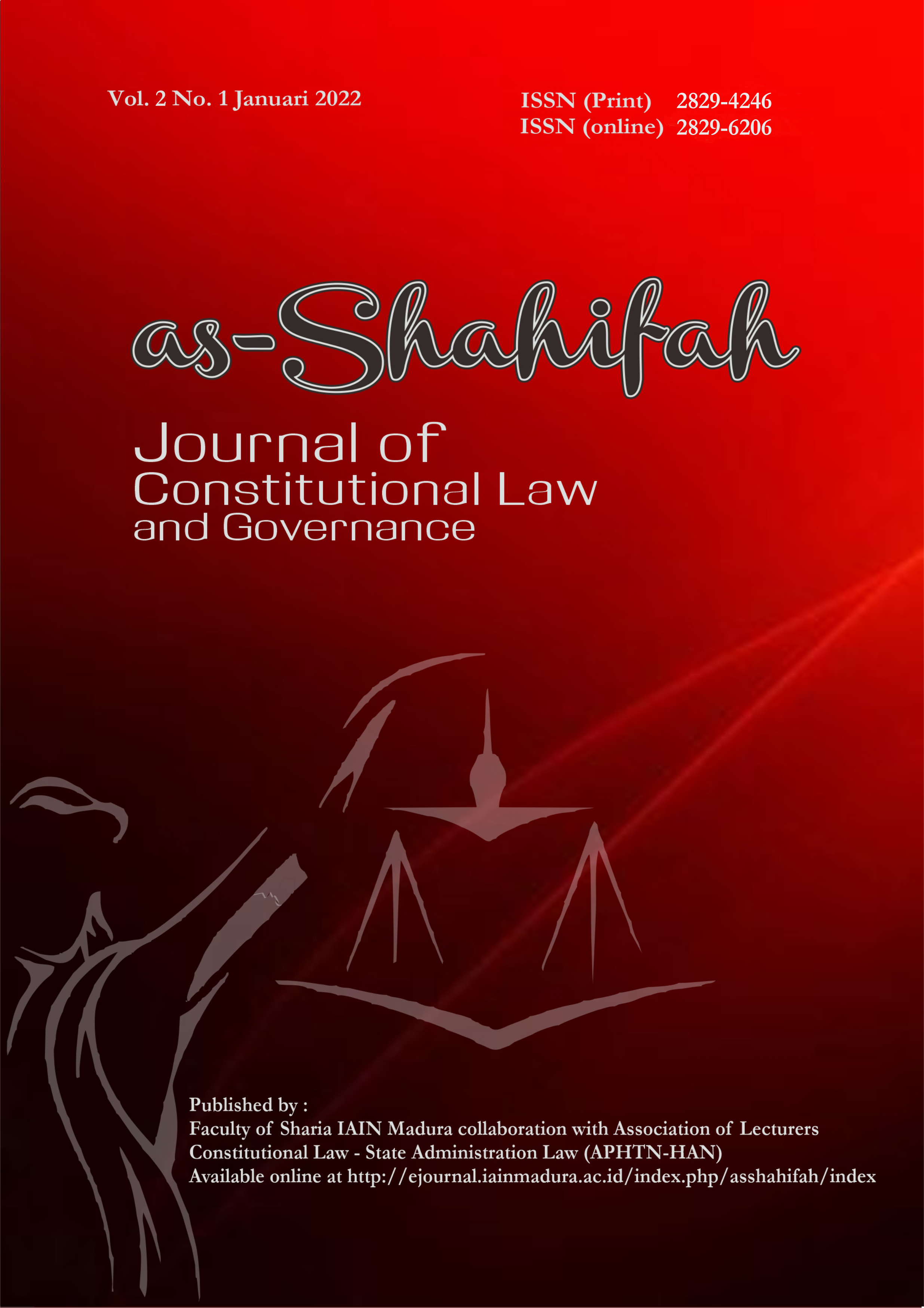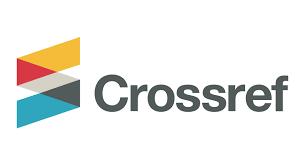Analysis Of Legal Functions And Maqashid Sharia On Islamic Marriage Law In Indonesia
 Abstrak views: 93
,
Abstrak views: 93
,
 PDF (English) downloads: 89
PDF (English) downloads: 89
Abstrak
This study discusses the analysis of the function of law and the analysis of Maqasid ash-Syariah on Islamic Marriage Law in Indonesia. The method used in this study, the author uses the type of normative research and conceptual approach. This type of normative research is a type of research that focuses on norms, rules, laws, and theoretical matters. The conceptual approach in question is as a theory to analyze the object of research. The questions that are the focus of this research are how to analyze the legal function of Islamic marriage law in Indonesia and how to analyze Maqasid Asy-Syariah on Islamic marriage law in Indonesia.
##plugins.generic.usageStats.downloads##
Referensi
al-Ghazali, Abu Hamid, al-Mustasfa fi Ilm al-Ushul, ed. Mohammed Abdul Salam Abdul Shafi vol. I, Beirut: Dar al-Kutub al-Ilmiyyah, 1413.
Al-Izz ibn Abd al-Salam, maqasid al-Saum, ed. Iyad al-Tabba, 2nd, Beirut: Dar al-Fikr, 1995.
Al-Juwayni, Abdul Malik, al-Burhan fi Ushul al-Fiqh, ed. Abdul-Azim al-Deeb, 4th ed. Mansurah: al-Wafa’, 1418 AH/1998.
Budiyono Kusumohamidjojo, Ketertiban Yang Adil Problematik Filsafat Hukum, Jakarta: Grasindo, 1999.
Ghiah al-Umam fi Iltiyath al-Dzulam, ed. Abdul Azim al-Deeb, Qatar: Wazarah al-Shu’un al-Diniyyah, 1400 AH).
Hasbi Umar, Nalar Fiqh Kontemporer, Jakarta: Gaung Persada Press, 2007.
Inpres Nomor 1 Tahun 1991 tentang Kompilasi Hukum Islam
Jaser ‘Audah, Maqasid al-Shariah: A beginner’s Guide, alih bahasa: ‘Ali ‘Abdelmon’im, Al-Maqasid Untuk Pemula, Yogyakarta: Suka-Press, 2013.
Nurmansyah, Gunsu dkk, Pengantar Antropologi: Sebuah Ikhtisar Mengenal Antropologi, Bandar Lampung: Aura Publisher, 2019.
Shihab al-Din al-Furuq, al-Dakhirah , vol.I, Beirut: dar al-Kutub al-Ilmiyyah, 1998.
Undang-Undang Nomor 1 Tahun 1974 tentang Perkawinan.
Publishing your paper with As-Shahifah : Journal of Constitutional Law and Governance means that the author or authors retain the copyright in the paper. As-Shahifah granted an exclusive non commercial reuse license by the author(s), but the author(s) are able to put the paper onto a website, distribute it to colleagues, give it to students, use it in your thesis etc, so long as the use is not directed at commercial advantage or toward private monetary gain. The author(s) can reuse the figures and tables and other information contained in their paper published by As-Shahifah in future papers or work without having to ask anyone for permission, provided that the figures, tables or other information that is included in the new paper or work properly references the published paper as the source of the figures, tables or other information, and the new paper or work is not direct at private monetary gain or commercial advantage.
As-Shahifah journal provides immediate open access to its content on the principle that making research freely available to the public supports a greater global exchange of knowledge. This journal is licensed under a Creative Commons Attribution-ShareAlike 4.0.This license lets others remix, tweak, and build upon your work non-commercially, and although their new works must also acknowledge & be non-commercial, they don’t have to license their derivative works on the same terms.
As-Shahifah journal Open Access articles are distributed under this Creative Commons Attribution-ShareAlike 4.0 International License (CC BY-SA). Articles can be read and shared for noncommercial purposes under the following conditions:
- BY: Attribution must be given to the original source (Attribution)
- SA: If you remix, transform, or build upon the material, you must distribute your contributions under the same license as the original.










